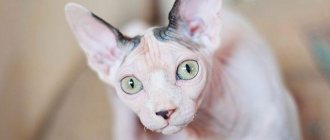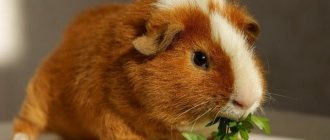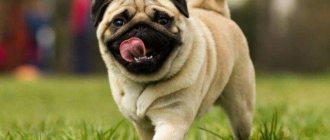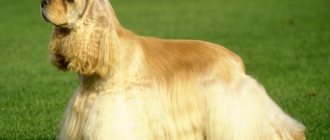When getting a pet, every owner is interested in what its life expectancy is, whether there is a tendency to certain diseases, and what to do to ensure that the four-legged family member lives as long as possible. How long French bulldogs live depends on proper care for them. But there are certain average indicators.
Nutrition, exercise, preventive examinations - these simple measures will maintain your pet’s health and increase the life expectancy of your pet.
How long do French bulldogs live?
The average lifespan of a bulldog is 9 to 12 years. Older dogs over 15 years old are found, but quite rarely.
If an animal has lived to such an advanced age, it means that it is not only a matter of careful care for it, but also the individual characteristics of the body - a very strong immune system, and the absence of injuries during its life.
Additional Information! There are cases where French bulldogs lived up to 20 years, but such an advanced age for representatives of this breed is a rare exception to the rule.
Conditions for the long life of a bulldog
Cheerful and active dogs have a longer life expectancy. But you should not overload your pet with excessive physical activity in the form of many kilometers of cross-country races.
The dog's energy level must correspond to the breed. It is quite easy to walk a bulldog, sometimes combining walks with games.
It is important to pay attention to the air temperature. In extreme heat or cold, the classic hour allotted for walking is not permissible. At this time, play with your bulldog indoors.
Scientists have noticed that animals that have undergone sterilization live longer than their counterparts. The reason for this does not lie in physiological transformations.
The peculiarity of the breed is that French bulldogs, as long as they live, try to look for adventures outside the home. The life of sterilized pets is calmer and longer.
We invite you to familiarize yourself with: What Oryol calico chickens look like
Is the life expectancy of dogs different in the private sector and in an apartment?
As practice shows, animals living in private houses live somewhat shorter lives than pets living in apartments.
This is explained by the fact that in the private sector, bulldogs are more susceptible to injuries in the local area, often get into fights with neighboring animals, and are more often attacked by ticks and other parasites. These factors negatively affect health and suppress the immune system.
There are also disadvantages to staying in an apartment if the owners are absent for a long time and cannot provide frequent walks for the pet with the required level of physical activity.
A French Bulldog living in an apartment should be taken for walks regularly.
How to increase your pet's lifespan
You can extend the active period and overall lifespan of your pet if you strictly follow all the rules of keeping:
- The feeding diet for a French bulldog should be selected strictly individually, depending on its state of health, age and activity, but it must be balanced. Insufficient or excessive amounts of carbohydrates, lipids and proteins, as well as mineral and vitamin complexes, often become the main reason for reducing the dog’s life expectancy;
- timely education and proper training will minimize the risk of your pet getting run over by a car or dying as a result of a fight with other aggressive dogs;
- Providing the French bulldog with a sanitary minimum, a comfortable temperature in the room, a comfortable lounger and sufficient physical activity during daily walks will significantly extend its life and significantly “delay” the approach of old age.
Timely and competent preventive measures aimed at maintaining the health of the dog are also important . Your pet needs to be provided with annual vaccination against deadly diseases, timely treatment against helminths and ectoparasites, as well as systematic visits to the veterinary clinic for routine examinations.
Return to content
Life expectancy for males and females - is there a difference?
Gender in itself does not affect life expectancy. But boys behave more aggressively towards other animals, often fight, and receive injuries that affect their health.
Additional Information! Girls live a maximum of about 15 years, males - up to 12.
But bitches have their own factors that provoke early death - childbirth. Pregnancy and childbirth place a lot of stress on the body, and the birth of puppies occurs mainly through caesarean section.
Differences between the life expectancy of females and males
Females live longer than males.
Females can live up to 15 years. Males have a browner character, they constantly get into fights with other individuals and breeds. Clashes with other dogs end in external and internal injuries. Bearing puppies, childbirth, and hormonal changes have a bad effect on the health of females. Due to the large head, a caesarean section is performed during childbirth. Sterilization prevents diseases of the genital organs.
Castrated males behave calmer. They are not subject to stress, unlike individuals who have not undergone surgery. The risk of prostate disease and other diseases of the reproductive system is minimal.
Take the Attention Test! Find 10 differences! (click right here!)
Find the answer Are you bothered by some problem or question? Enter “Breed” or “Name of the problem” into the form, press Enter and you will find out everything about the issue that interests you.
How to determine a dog's age
You can independently determine how old a bulldog is at home. There are several ways to do this. According to the condition of the teeth:
- the younger the animal, the whiter and sharper its teeth;
- a pet under 2 years of age has snow-white incisors, without signs of caries;
- at 3 years, the lower teeth gradually wear down;
- 4 years - the upper incisors wear off, the color remains white;
- 5 years - the fangs become rounded, the color changes to a yellow tint;
- 6 years - yellowing and thinning of teeth;
- 8 years - dental problems arise - caries, loosening of teeth and tooth loss.
You can most accurately determine the age by looking at the teeth.
Based on the general appearance of the pet and its behavior:
- the older the dog is, the duller its coat; by the age of 8, gray hairs appear on the face;
- eyes - with age they become increasingly discolored;
- skin - by the age of 8, the skin loses its elasticity.
Behavior - with age, the reaction to external stimuli becomes dull, the dog prefers to sleep most of the time, refuses to play.
Additional Information! Among all types of bulldogs, American and English breeds are the longest-livers. The French take only 3rd place.
Factors influencing the lifespan of a French Bulldog
The lifespan of a French Bulldog depends on a number of factors:
- Diseases - oncology, heart pathologies, obesity, skin diseases.
- Accidents - Bulldogs are inquisitive dogs, which is why they often find themselves in various unpleasant situations on the street and receive injuries of varying severity.
- Nutrition.
- Physical activity - laziness and preference for a passive lifestyle, especially if the owner indulges this, lead to obesity and problems with the cardiovascular system.
- Difficulties with childbearing.
- Emotional state - dogs are susceptible to stress just like people.
- Sterilization or castration. It is recommended to sterilize your bulldog because... It is believed that after this the animals live longer. Unsterilized dogs are more emotional, a little more aggressive, and they have a higher risk of developing genitourinary cancer.
The weak point of bulldogs is the shortened shape of their muzzle. This structure increases the risk of diseases of the respiratory system, heart and vascular system.
The structure of the muzzle is an additional negative factor
TSAMAX INTERNATIONAL
- 37531
Fans of French bulldogs, with each new baby entering their lives and hearts, believe that he will live a long life without any diseases, that he will be playful and active in old age. Unfortunately, too few of our man-made breeds remain this way until the age of ten or twelve, reaching it without problems. And even those of our dear old people who managed to avoid major diseases still cannot avoid the inevitable deterioration of the body’s condition, which is associated with aging.
Still, there is a lot we can do for our little Frenchies if we start when they are young to increase their chances of reaching old age in good health and help them combat the changes associated with age. We must be aware of the natural changes that age brings and take care to help them adjust to these changes. We must also understand the most common age-related disorders and diseases in the French Bulldog in order to catch them at an early, treatable stage.
Old age for a French Bulldog begins at about 7 years of age, although some dogs (like some people) may age faster or slower than average. The main difficulty is that older dogs often have several health problems at once, rather than just a single disease. This may limit the choice of treatment, since a cure for one disease may harm a dog that also has a second disease. Aging dogs are more unpredictable in their reactions to medications, stress, and environmental changes such as temperature.
Monitor the health of an aging friend more closely and more often than a young friend, since his body does not have the same physical reserves and ability to respond to treatment as a puppy did. Early detection and treatment of the disease is especially important for older dogs, but prevention is the best choice for them.
As your dog ages, age-related changes in the body affect how the disease affects him, how it develops, and how the body responds to medications. Medication doses for aging dogs may need to be reduced due to changes in the liver and kidneys (the organs responsible for eliminating drugs from the body) to prevent them from reaching harmful concentrations. As veterinary medicine advances, more dogs are reaching “cancer age,” so you should be aware of the most common types of tumors in older Frenchies.
Finally, to help your dog live a long, fulfilling life, it is important to enlist the help of your veterinarian and develop a plan that should include an annual exam with blood and urine labs starting at age 7. This will give you a baseline of all indicators against which later analyzes can be compared.
Nutrition
With age, the senses of taste and smell become duller, and an aging dog's appetite may decrease. If your loss of appetite is not due to dental problems, try heating your food to bring out its flavor. If the food is dry, moisten it with warm water.
Because metabolic rate (as well as physical activity) decline with age, some older dogs become fat because they continue to eat the same amount of food they ate when they were young and expend countless calories. Switch to a good quality low calorie diet for aging dogs that is limited in sodium and phosphorus and high in fiber (to help with bowel movements).
If your Frenchie develops an intolerance to fatty foods (and you should limit this even in young dogs), to prevent the development of pancreatitis (disease of the pancreas), reduce the amount of fat in his food to an absolute minimum. You can give him one of many well-balanced vitamin supplements with zinc and fatty acids (Pet-Tab F/A Zinc Granules and Efa-Z are a couple of good supplements).
Many doctors also recommend reducing the amount of protein in an aging dog's diet to reduce the stress on his also aging kidneys.
Dream
Older Frenchies may sleep more often, but not as long as younger ones. To help your dear friends have a normal night, try feeding them later in the evening, gradually adding a small amount of milk if your dog digests it without diarrhea. You must be sure that your pet is warm and use an egg-shaped booth or a high basket so that the cold from the floor does not reach him and his old bones and joints are comfortable.
Vision and hearing
Old dogs' vision and hearing weaken, just like old people's. Test your dog's vision and hearing every month and record the results so changes can be noticed and monitored. Try to test his reaction to sounds of different pitches, since hearing loss sometimes affects only low, mid, or high tones. If you notice that he responds better to high-pitched tones, speak to him in a high-pitched voice.
If your dog has significant hearing loss, try not to walk behind him or startle him. Warn others around you (especially small children) not to do this, since a frightened dog, even a French bulldog, can “unexpectedly” bite a person. Pet your Frenchie more so he doesn't feel lonely because of his hearing loss.
If your dog is blind, talk to him and pet him a lot to compensate for his loss of vision if possible. Apply scent marks (for example, vanilla) to the corners of furniture, doors, steps. Do not move furniture. Lock your dog up when strangers come to you and, of course, keep him on a leash when walking, except when walking in familiar and fenced territory. Don't let her get into bushes, especially those with thorns or sharp protruding branches.
Muscles and bones
Aging dogs lose muscle mass, which weakens their legs and makes their tummies sag. They may also develop osteoporosis and arthritis, causing their bones to become more fragile and their aging joints to become painful. If an aging dog's movements seem clumsy, stiff, stiff, or limping, especially in the morning upon waking, the most likely cause is arthritis. Recommendations:
- your elderly Frenchie will be comfortable in a comfortable soft house or on a foam mattress with a wool blanket in a nice warm place;
- The use of vitamins and supplements with calcium throughout the dog’s life can slow down the development of osteoporosis. Good nutrition will help prevent muscle and bone loss, but don't forget to control your obesity;
- Avoid activities that require your dog to run, jump, spin, or turn sharply. Light exercise and play are beneficial, but it is important that the dog is pain-free and healthy;
- A very old, arthritic dog may benefit from passive, limited-range exercise. Lay her on her back or side in a warm, comfortable place, then slowly and carefully bend and extend her legs. This exercise will help keep your muscles toned so they don't atrophy and will also help keep your joints flexible. In addition, it also stimulates blood circulation;
- If you want to give anti-inflammatory medications to reduce the pain and inflammation of arthritis, aspirin is the safest, but check with your doctor before giving your dog any medication. Even aspirin can cause bleeding problems. Tylenone and ibuprofen should not be given to dogs. Their action is no different from that of aspirin, but they have a worse effect on old kidneys and liver.
Leather
As dogs age, their skin becomes thinner and drier. Don't bathe your senior Frenchie too often, or you'll dry her out even more. If your old dog tries to recapture the heady exhilaration of his bygone youth by wallowing in the rotting remains; If she needs a medicated bath for flea treatment or treatment for a skin disease, be sure to use the mildest, non-drying shampoo possible. Wash your dog in a warm, wind-free place and ask your doctor about the best oil to use to soften the skin. Thin, older skin is much more easily damaged than that of young dogs, so do not use heating pads, hot water bottles, hair dryers or hot water for bathing.
Older dogs may develop thickened patches of skin (called calluses) on their paw pads, elbows, and nose. Lubricate them with sea buckthorn oil and propolis creams to soften them. If this becomes a problem, your doctor can prescribe an ointment that will soften the keratin that makes up the lump.
Old wool becomes thinner, turns gray and loses its shine. Increasing the amount of unsaturated fatty acids in food can improve the condition of both coat and skin. It would also be helpful to have your thyroid function checked, especially if you notice symmetrical hair loss on your hind legs.
As an aging dog's physical activity decreases and his gait may change due to arthritis, his nails may wear down less or wear down differently. Make gentle nail care a regular part of your nail routine, being careful not to bleed or twist old arthritic paws.
Lifestyle changes
Old Frenchmen, like old people, can become conservative, especially in regard to their routine, diet, environment and the people to whom they are attached. They may resent and resist any changes to their routine, which are more stressful for them than for younger dogs. If you must hospitalize an older dog or place him in a dog boarding facility, minimize changes to his life by leaving him with his own bed, bowl, food, toys, etc.
You may notice changes in your older dog's behavior and reactions. Failure to follow commands (if the assumption is true that your Frenchie was obedient in his youth) may be caused by hearing loss. However, it must be taken into account that older dogs may simply be less interested in what is happening around them. Sometimes a new puppy will pique their interest and can breathe new life into them, but it can also cause a lot of stress. It is difficult to predict how a particular dog will react to a newcomer. If you have adopted a new puppy and the old-timer is not too happy about it, then he needs a shelter where the old-timer can hide without being bothered by the young and energetic creature.
Changes in behavior can be slow and subtle or rapid and dramatic. If you notice changes in your dog's behavior, especially for the worse, talk to your doctor. This is often the first sign of pain or the manifestation of any disease.
We hope that knowledge of the described features of the elderly age of our dear French will help us all meet it fully armed.
Take care of your friends!
"Virtual Kennel Club"
Veterinarian's recommendation
For older dogs, we recommend Tsamaks for aging and frail dogs and Tsamaks for aging and frail small and medium breed dogs. This feed additive has a pronounced anti-sclerotic effect, prevents the accumulation of cholesterol in the blood, has an anti-inflammatory effect, stimulates cardiac activity and immunity, restores and normalizes the cleansing function of the liver, improves digestion and restores physical strength.
Might be interesting
- The passing of a four-legged friend... For some reason, it so happens that in our literature about dogs almost no one ever writes about the death of a beloved four-legged family member. Maybe this is right, why bother your soul when it will inevitably happen anyway, it’s better not to think, to live in the happy present.
- An old dog in the house
Usually, when a person gets a puppy or kitten, he does not think about the fact that in 10 - 15 years the animal will grow old. The life of an animal is much shorter than that of a human and, of course, this should be remembered when you acquire a four-legged friend. How can we help our pet, who has aged, but has not become less dear to us and continues to remain a member of the family? - Age-related disorders of body systems
All organs and systems of a dog can have diseases that develop as they age. The main ones are discussed here so that you can notice them in time when observing your dog. - Old age and death of a dog
Unfortunately, dogs are given a very short life, and the time comes when everyone’s favorite and darling of the family must leave us - this is inevitable and very difficult. Some happy owners manage to live with their friend for seventeen, eighteen years, while others lose him after just a few years... - How to take care of an older dog?
The old dog becomes slow to rise, sings more, plays little, the former enthusiasm and energy disappear, and on walks it can be slow and awkward. At home, an aging pet usually looks for a warm, comfortable place to rest and may sleep all day.
Comments
Inna 10.20.2017 13:42 Hello. I have a French bulldog, he is 6 years old, he has arthritis, we went through a course of treatment, it didn’t help, what should I do, help?
Reply | Reply with quote | Quote
Update list of comments RSS feed of comments for this entry
Add a comment
How to extend the life of a pet
How long bulldogs can live depends not only on their genetics, the absence of hereditary diseases and strong immunity, but also on how well the owner takes care of his pet. You can extend the lifespan to the maximum if you provide the dog with comfortable living.
Proper diet
The animal's diet should be varied and balanced, and the products should be of high quality, enriched with vitamins and minerals. A proper diet consists of the following foods:
- lean meats - they must first be frozen or scalded with boiling water;
- porridge - buckwheat and rice;
- offal - served every 2 days, boiled;
- fermented milk products with minimal fat content - they should be given three times a week;
- berries, fruits - no more than once every 2 weeks.
The shells of quail eggs need to be crushed and sprinkled on ready-made dishes. It is also a good idea to add a small amount of sunflower or olive oil.
Attention! You can feed your dog industrial dry food, but it must be of high quality, holistic or super premium.
You need to monitor how much your pet eats. Systematic overeating leads to obesity, from which the dog can survive much less.
Obesity greatly shortens life expectancy
Physical exercise
The bulldog is a lazy dog. But to maintain good health, he needs to provide physical activity. Walking should be carried out at least 2 times a day, for 30-40 minutes.
Treatment and deworming
Any disease, even a mild cold, must be treated correctly and in a timely manner. What is important is deworming, which is carried out 21 days after birth, then repeated after 21 days. During the first year of life, deworming is carried out three times.
Hygienic care
A bulldog can live a comfortable and long life only if the owner observes a number of hygiene measures, which are carried out regularly:
- Combing the coat every other day.
- Wash using specialized shampoo once a season.
- Wipe the folds with a damp cloth and moisturize them with baby cream regularly. Wiping wrinkles on the face after every meal.
- Examination of ears, eyes and anus - every week.
- Ear cleaning as needed.
Attention! If the dog is unable to scratch its claws on the asphalt, they should be trimmed every 1-1.5 months.
Description of the breed
FCI Standard No. 101 dated 04/28/1995 “French Bulldog”. Group 9 “Ornamental and Companion Dogs”. Section 11 “Small Molossoids”.
The ideal French Bulldog is a compact and powerful dog that looks dynamic and agile. There should be no feeling of excess heaviness or lethargy, or lack of strength. Broad chest, strong body, stable limbs.
Physical parameters:
- French bulldog weight 8-14 kg;
- height is proportional to weight (usually up to 35 cm).
The head is round: with a pronounced forehead, cheekbones and flattened naso-facial part. The eyes are somewhat convex, without large whites, and spherical. Description of the French Bulldog breed contains powerful, arched jaws covered with symmetrical jowls. The nose is wide, with oblique nostrils. The ears are large, erect, with completely open auditory canals.
The tail is short from birth - slightly broken, as if glued into the body. It is possible that it is thin and hangs down to the hock joint.
The coat is very short and lies tightly to the body, without undercoat. White-fawn, fawn (from bright red to “cafe au lait”) Color:
- brindle, black brindle and white brindle;
- fawn and white-fawn;
- white with and without spots.
How long do French bulldogs live? They do not last long, about 10 years on average, delighting their owners.
When the future owner of a puppy makes a choice, he weighs the features and properties of different breeds on some “internal scales”. Each has a set of not only advantages, but also disadvantages.
Pros of the French Bulldog:
- Compact size, ideal for living within 4 walls.
- Does not require a lot of walking or heavy exercise.
- Short hair does not require special hygiene procedures.
- Enough strength to be a serious dog, but not enough to drag its owner along.
- Friendly and cheerful disposition, loving nature.
- Trainability and obedience.
- Unusual, captivating appearance.
- Decent security qualities.
Breed weaknesses, disadvantages of the French Bulldog:
- Allergies, especially food allergies, are possible.
- It is difficult to tolerate hot and stuffy weather.
- Makes a lot of noise, wheezing, and is prone to emitting gases.
- Requires special attention and love.
- Doesn't always get along with other animals or small children.
- The need for special care of the face.
The French Bulldog, despite some aspects, is still not the most difficult breed. This is evidenced not only by the popularity of dogs around the world, but also by their owners. A little patience, a drop of love and acceptance of characteristics - your ideal bulldog is ready! A bundle of love and fun at your service!
The overall appearance, despite its small size, should be powerful. Those. the skeleton is strong, the muscles are very well developed, the parts of the body are proportional. The dog has a stocky, compact figure, a short tail, a snub-nosed muzzle, and erect ears. The coat is naturally smooth and short.
As for weight, for males and females the minimum standard is the same - 8 kg, but the maximum varies: for the former - 14 kg, for the latter - 13 kg. Weight should be proportional to height, which means from 30 to 35 cm.
| Head | Large, quite massive in comparison with the body. The stop is pronounced. The muzzle is noticeably upturned and itself wide and short. The wrinkles present on the muzzle should be lower than the top of the eyes. The pigmentation of the nose is black, the nasolabial line is noticeably pronounced. The nostrils are well opened and set obliquely. The lower jaw is curved upward, an undershot is required. The lips are thick and should cover the teeth when the mouth is closed. The pigmentation of the lips is strictly black. The same should be true in terms of color for eyelids and eyelashes. |
| Teeth | Both jaws are very strong, which, combined with a powerful neck, gives these dogs a serious grip. The number of teeth, according to the norm, is 40. The absence of one or more incisors is unacceptable. Any curvature of the jaw is considered a defect. |
| Ears | The correct shape of the ears is erect, wide at the base, narrow and rounded at the tip. The correct position is vertical in relation to the head, at a sufficient distance from each other and quite high. |
| Frame | The body is short, with pronounced rounded ribs. The chest is so wide that it looks barrel-shaped. The back is also wide, the muscles on it are well developed, the back narrows towards the hips. The bottom line of the chest should be rounded. The croup is sloping and fairly wide. |
| Paws | Short, but the hind ones are slightly longer than the front ones. The muscles on them are quite powerful, the paws themselves are straight, the front ones are spaced widely. Disadvantages include weak pasterns, crooked forearms and twisted elbows. For the hind legs - the presence of dewclaws or traces left from their removal. |
| Tail | The shape of the tail itself (straight, curved, with kinks) does not matter much, since any of the possible options is included in the standard. |
When moving, the animal should move very freely and easily. If his torso sways, it is considered a flaw. If the dog has a mincing gait or ambling, this is a defect.
The French Bulldog is calm and balanced, but training is required to consolidate the natural qualities of this mini dog. He will be a combat comrade, a rodent hunter, and a decorative pet in the house. This is a classic Molossian breed, the only difference of which is its miniature size.
Story
The word “French” in the name of the breed is not used because it first appeared in France. She is of English descent. Initially, this dwarf dog protected people from rats indoors (in factories).
After the scientific and technological revolution, many workers scattered around the world in search of work. Those of them who went to France also captured their smaller friends. The latter became the favorites of the local elite, since only they could afford it. The breed was officially registered in 1896.
Breed standard
French Bulldog breed standard:
- Frame. Square. There is a gradual rise from the withers to the lumbar girdle.
- Breast. In the shape of a cylinder, the ribs are barrel-shaped and recessed.
- Head. Large compared to the body. The bones of the upper jaws are shortened, the nose is tilted back.
- Neck. Short and muscular. There is no suspension.
- Ears. Wide at the base, but rounded at the tips. Located high, but at a sufficient distance from each other.
- Muzzle. Snub-nosed, black and wide.
- Eyes. Large expressive and round eyes (a sign of intellectual development)
- Limbs. Short forearms and pasterns, set vertically. An analogy can be drawn with the paws of cats: small, round in shape, with tightly closed black claws. The rear ones are stronger than the front ones. Placed vertically.
- Tail. Short from birth, long enough to cover the anus.
- Wool. Short and smooth without undercoat.
- Size. Height - from 27 to 35 cm (females up to 32 cm).
- Weight. Up to 14 kg (females - mostly 13 kg).
The following colors of the French bulldog are allowed by the breed standard:
- from light fawn to red (the presence of brindle or milky spots is optional);
- brindle with white spots (possibly a mask on the face);
- plain (black and blue);
- completely white, but with one condition: black eyelids and nose.
The photo shows the colors of a French bulldog.
We invite you to read: Stone hazel grouse - who is it?
The lifespan of bulldogs is 9-12 years. This is due to the characteristics of the diseases of animals of this breed, which prevents them from surviving up to twenty years, despite their size.
Caring for an Aging Dog
An old pet needs special care. Nutrition should be light and balanced so that there is no heavy load on the digestive system. Hygiene procedures are carried out carefully and regularly. Particular attention should be paid to teeth and the condition of the oral cavity:
- brushing your teeth once a week;
- preventive examination by a veterinarian;
- timely removal of tartar and plaque;
- removal of diseased incisors that cannot be cured.
Even if your pet is trained to use a litter tray, it must be walked in the fresh air. The dog must be kept on a leash and walked away from potentially dangerous places - tall grass, roads. The degree of physical activity decreases.
Attention! After each walk you need to inspect the paw pads. If they have cracks or wounds, be sure to lubricate them with antiseptics and moisturizing creams.
You can’t indulge the laziness of an elderly bulldog
Causes of premature death
Despite the average life expectancy of 9-12 years, it is possible that the pet will die much earlier. Animals can die due to diseases that are not treated in a timely manner and from injuries.
Injuries and accidents happen because an inquisitive dog does not know how to assess the degree of danger. He may suddenly run out onto the road or try to fight with large animals.
Walking your bulldog on a leash in a calm, safe area is a guarantee that nothing will happen to your pet.
Signs of old age
Due to its modest size, the French bulldog remains a cute and funny pet until a very old age. You can understand that age has taken its toll by the following signs:
- the bulldog does not respond to external stimuli or sounds;
- the dog refuses physical activity, games, prefers to sleep;
- urinary incontinence;
- the dog often howls for no reason;
- chronic pathologies are activated;
- teeth begin to fall out, the coat becomes dull, and gray hairs appear.
Even a very elderly dog will live a full, active life if the owner creates a comfortable environment for him, both physical and emotional.
The life expectancy of a bulldog is from 9 to 12 years, and sometimes more, if the owner of his four-legged friend provides him with the right care - frequent walks with physical activity, regular hygienic care, healthy nutrition and, of course, preventive examinations at the veterinarian.











